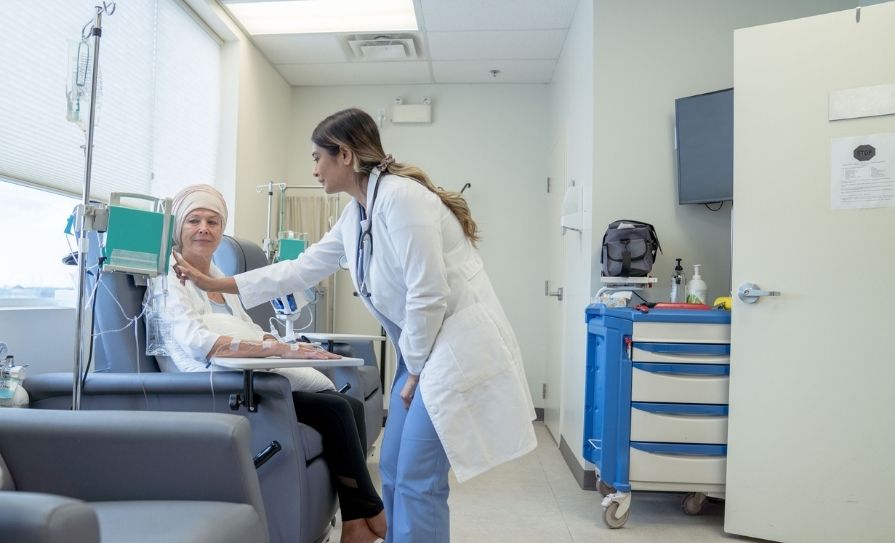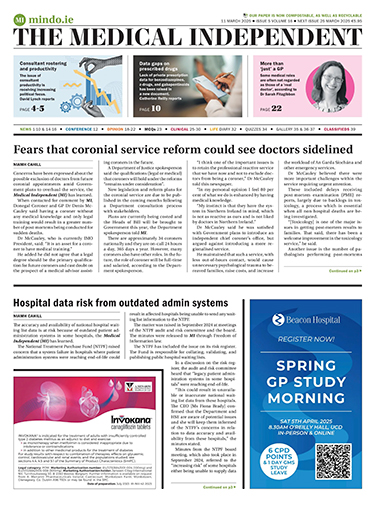An independent review panel, which scrutinises serious incidents in social and community care, was “at a standstill”, found a report commissioned by the HSE CEO.
The national independent review panel (NIRP), which aims to promote system-wide learning, had received no appropriate referrals in two years. Furthermore, there was “no indication” that more referrals would be forthcoming, according to the report in July 2024. Consequently, its allocated resources had been “scaled back”.
The report was authored by NIRP Chairperson Ms Pamela Fagan on foot of a request by HSE CEO Mr Bernard Gloster.
The NIRP was established by the HSE in 2017. As of July, it had concluded five reviews, with one in the final stages of completion. The NIRP reviews included those on the ‘Brandon’ and ‘Emily’ cases. The NIRP received referrals from senior HSE managers.
Mr Gloster asked Ms Fagan to examine whether the NIRP should/could adopt a referral model similar to that of Tusla’s national review panel whereby specific incident types are automatically referred; whether the scope of the NIRP should be expanded to other HSE- and HSE-funded services; and an overall consideration of the role and functionality of the NIRP in the future.
According to Ms Fagan’s report, feedback from a consultation and review of international practices suggested that the NIRP was “of value”. In addition, the existing criteria for referral was reflective of best practice internationally.
The reason for a lack of referrals was “predominantly” because services had an alternative pathway to external independent reviews of serious incidents through the HSE incident management framework (IMF).
Under this model, a serious incident management team (SIMT) and senior accountable officer (SAO) retained “a degree of control” over commissioned reviews as the final report must be accepted by the SAO.
By contrast, when reviews are undertaken by the NIRP, the final report is submitted to the HSE Commissioner (National Director, Quality and Patient Safety).
Some representatives from community and social care expressed dissatisfaction with what they perceived as a lack of local governance of NIRP reports.
In addition, some noted that NIRP reports had resulted in “negative media attention and attention from public representatives for the services involved”.
“Concerns were raised regarding perceived ‘witch-hunts’, where staff were blamed for incidents that occurred. The reviewer found that while the reports produced by NIRP during the reviews did not focus on blame, follow up to the reports, particularly with the media coverage, was challenging to services and to staff. Consequently, there is a wariness towards NIRP reviews.”
The perceived reduced control over a NIRP final report, and the concern regarding negative media attention, was “significantly reducing” the likelihood of these services sending referrals.
Ms Fagan’s report recommended maintaining the existing NIRP referral criteria and structure. She advised of the need to increase awareness of the purpose of the NIRP and highlight its value by organising learning events.
In regard to longer-term actions, Ms Fagan recommended reviewing the referral pathway and criteria and incorporating it within the HSE’s IMF. This would likely involve consideration of a NIRP referral for category 1 incidents reviewed by a SIMT which are considered to require an external review team. The process should also include a defined pathway for NIRP referrals from individuals in key roles (eg, HSE CEO/Chief Clinical Officer, etc).
The reporting relationship between the NIRP and the HSE should be reviewed and defined, particularly with regard to the new integrated quality and patient safety unit, according to the report.
Reporting structures must be sufficiently robust to “maximise the independence” of the NIRP (eg, continued oversight by the HSE safety and quality subcommittee or equivalent).
The potential expansion of the NIRP beyond community and social care “can be considered at a later date” when it is fully functioning.
Ms Fagan’s report was obtained from the HSE under Freedom of Information law.
A HSE spokesperson told this newspaper: “The recommendations of the NIRP review are being considered in the context of the overall regional restructuring in the HSE Health Regions and the transfer of governance for the NIRP to the Office of the Chief Social Worker in November 2024.”
The spokesperson confirmed there had been no further referrals to the NIRP and resources continued to be “scaled back accordingly”.
“The HSE recognises the value of the NIRP, is committed to promoting the NIRP as part of the overall incident management framework and has accepted the recommendations of the review,” added the spokesperson.
“A plan of work is now underway to support increased visibility of the NIRP, share learning from previous reviews and ensure appropriate referrals for consideration are identified at regional level.”













Leave a Reply
You must be logged in to post a comment.